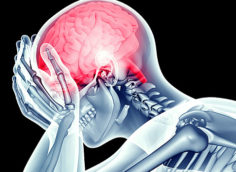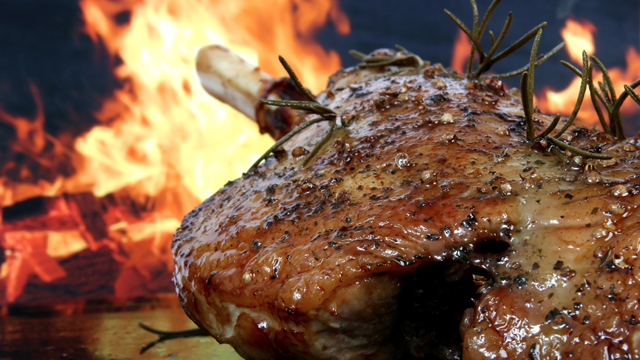There's a contradiction faced by every dieter. The harsher a dieter restricts calories, the slower his or her metabolism becomes. Weight (fat) loss grinds to a crawl. Many of us realize that fasting, or even skipping meals, is perhaps the worst way to specifically strip off fat over time.
Let's start with data including a classic "semi-starvation" study from back in the late 1960s. The results look something like this:



This figure is best read from the bottom-up. Take a minute and soak it up. Drastically cutting your calorie intake isn't pretty, is it? Look how efficient your body can become when it senses starvation. It'll slow its metabolic rate to the point of conserving every gram of surplus baggage you acquired last holiday season. Although this trait was beneficial back in the days of struggling, evolving cave men hoping for their next meal, nowadays it's insidious! Yet something must be done. So how many calories should one restrict on a day-by-day basis?
Good question; it's one that's approachable in many ways.
It's clear from the T-mag Forums that bodybuilders choose vastly different food combining methods including AM carbs and PM fats, all protein plus fat, or all protein plus carbs. But one thing needs to be pointed out: in order to lose body mass – hopefully as fat – one needs to expend more kcal than he consumes. We can't, after all, change the laws of thermodynamics.
Without going into a treatise on the definitions of thermic effect of food (TEF), resting metabolic rate (RMR), thermic effect of activity (TEA), total energy expenditure (TEE), etc. – which can certainly be found elsewhere on T-mag – let's talk about some of the important questions that remain.
Where to Start?
First, grasshopper, one must know from whence he's beginning. Without baseline data, how can we assess progress?
There are two ways to estimate energy requirements for body weight maintenance, one more crude but easy to calculate and the other more detailed and presumably more accurate. Let's go with the easier way first. The use of a formula (pick from several dozen) to estimate RMR is commonly used along with an "activity factor." For example, the Harris-Benedict equations provide a number that corresponds to the calories necessary for the basics: cellular functioning and physiologic processes at rest.
- Men: 66.5 + (13.8 x weight in kg) + (5.0 x height in cm) – (6.8 x age)
- Here's an example: 80 kg (176 pound) male; 177.8 cm (5'10") tall; 25 years old: RMR = 1889 kcal
- Women: 655.1 + (9.6 x weight) + (1.9 x height) – (4.7 x age)
These classical equations give us our energy needs. They're fairly accurate, plus or minus 14%, (8) if we lie there like a lump, unfed, in a temperature-controlled room. They don't mean a lot unless that description fits your lifestyle. However, multiply by a single number representing overall daily activity and you have a gross estimate:
- x 1.3 for office work, driving, etc.
- x 1.6 for light labor (garage work, carpentry, etc.)
- x 2.0 for heavy labor, many team sports
That's pretty much it for this method. The resulting number gives you his/ her TEE plus or minus about 20 percent. Yes, that's a lot of potential error, but without a $20,000 metabolic cart sitting in your living room, it'll have to do. The estimate can be tweaked over time as you gain savvy in what it takes for you to make progress. For a ballpark number, consider that most college-age men rate about 3000 kcal/ day of total energy expenditure (TEE).(2)
Here's Another Method
Individually add in 1. resistance exercise 2. "cardio" 3. thermic effect of food (averaged at 10% of a mixed meal; about 6% for fat, 6% for carbs and 25% for protein) and finally, thermic effect of activity (non-training).
It's easy to consult textbook or internet tables for this latter portion. TEA is simply kcal spent each hour (or minute) during various tasks:
- Lying around half-asleep (~0.017 kcal/ kg each minute)
- Seated office work (.028 kcal/ kg each minute)
- Easy walking outside (.079 kcal/ kg each minute)
- Cleaning house (.058 kcal/ kg each minute)
Of course, these "exertion" numbers have resting needs built-in, so caution is called for when adding it all up. The complexity of this method for obtaining calorie expenditure (and therefore maintenance needs) lies in the fact that you're literally breaking down your waking day hour-by-hour. The extra effort should provide a more accurate caloric expenditure for you.
Here's a detailed example of a dieting, hard-training, office working T-man who's performing lots of negatives at the gym and has to clean up around the house a bit. This is for all you obsessive types who love to crunch numbers:
80 kg (176 pound) male; 177.8 cm (5'10") tall; 25 years old:
Thermic Effect of Exercise
- 1 hour weight training = 250 kcal
- 1/2 hour light cardio = 200 kcal
-plus-
Thermic Effect of Food
- 200 g protein (which is 800 calories) x .25 = 200 kcal
- 300 g carbs (which is 1200 calories) x .04 to .06 = 72 kcal
- 100 g fat (which is 900 kcal) x .04 to .06 = 54 kcal
-plus-
Thermic effect of Activity (general)
- 8 hours office work = .028 kcal/ kg each minute x 80 kg x 480 min = 1075.2 kcal
- 1/2 hour house cleaning = .058 kcal/ kg each minute x 80 kg x 30 min = 139.2 kcal
- 5 hours resting = .017 kcal per kg per minute x 80 kg x 300 min = 408 kcal
- 9 hours sleep (about 10% less than resting) = .015 kcal per kg per minute x 80 kg x 540 min = 648 kcal
- Whew! TOTAL = 3040 kcal for this particular day (to stay at present body weight)
Thermic Effect of Stress (see below): Add 10%
Grand Total (with eccentric training) = 3344 kcal
(Recall from the calculation that our example is eating just 2900 kcal; this is a very mild 14% negative energy balance.)
Note that last, bodybuilder-specific addition to energy expenditure. An athlete who regularly gets muscular soreness and trains brutally hard most days (be honest with yourself), should also probably add on a "stress factor" of 1.1 to account for the hyper-metabolism of "injury." This is often overlooked when eccentrically-trained athletes compute their energy balance. It shouldn't be underestimated, however; cortisol can raise metabolic rate (4) as can other stressful injury processes. I've seen it and so have others in the lab.(5,9)
After choosing a method and getting one's needs for resting "energy equilibrium," we can then turn our attention to whittling-away a portion of that weight-maintaining energy (calories). Stay tuned for the good, the bad, the restrictive and the contradictive in Part II.
References
- Abbott W et al. Energy expenditure in humans: effects of dietary fat and carbohydrate. Am J Physiol 1990 258(2 Pt 1): E347-E351.
- Borel M et al. Estimation of energy expenditure and maintenance energy requirements of college-age men and women. Am J Clin Nutr 1984 40(6):1264-72.
- Bray G. Effect of caloric intake on energy expenditure in obese subjects. Lancet 1969, 2: 397.
- Brillon D et al. Effect of cortisol on energy expenditure and amino acid metabolism in humans Am J Physiol 1995 268: E501-E513.
- Dolezal B et al. Muscle damage and resting metabolic rate after acute resistance exercise with an eccentric overload. Med Sci Sports Exerc 2000 32(7): 1202-7.
- Fukagawa N et al. Protein-induced changes in energy expenditure in young and old individuals. Am J Physiol 1991 260(3 Pt 1):E345-52.
- Guyton A. Medical Physiology 1996 W.B. Saunders Co., Philadelphia, PA, 908.
- Lee R. and Nieman D. Nutritional Assessment, 3rd Ed. 2003 McGraw Hill; Boston Mass: 233.
- Lowery L. and Mendel R. Assessing Post-Workout Recovery: An Issue of Timing. Sports Cardiovasc Well Nutr Symp, 2003 Chicago, IL.





